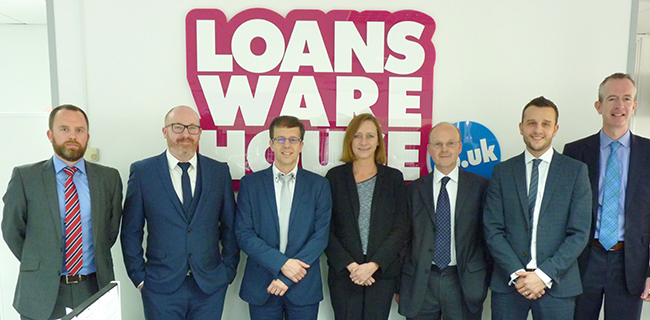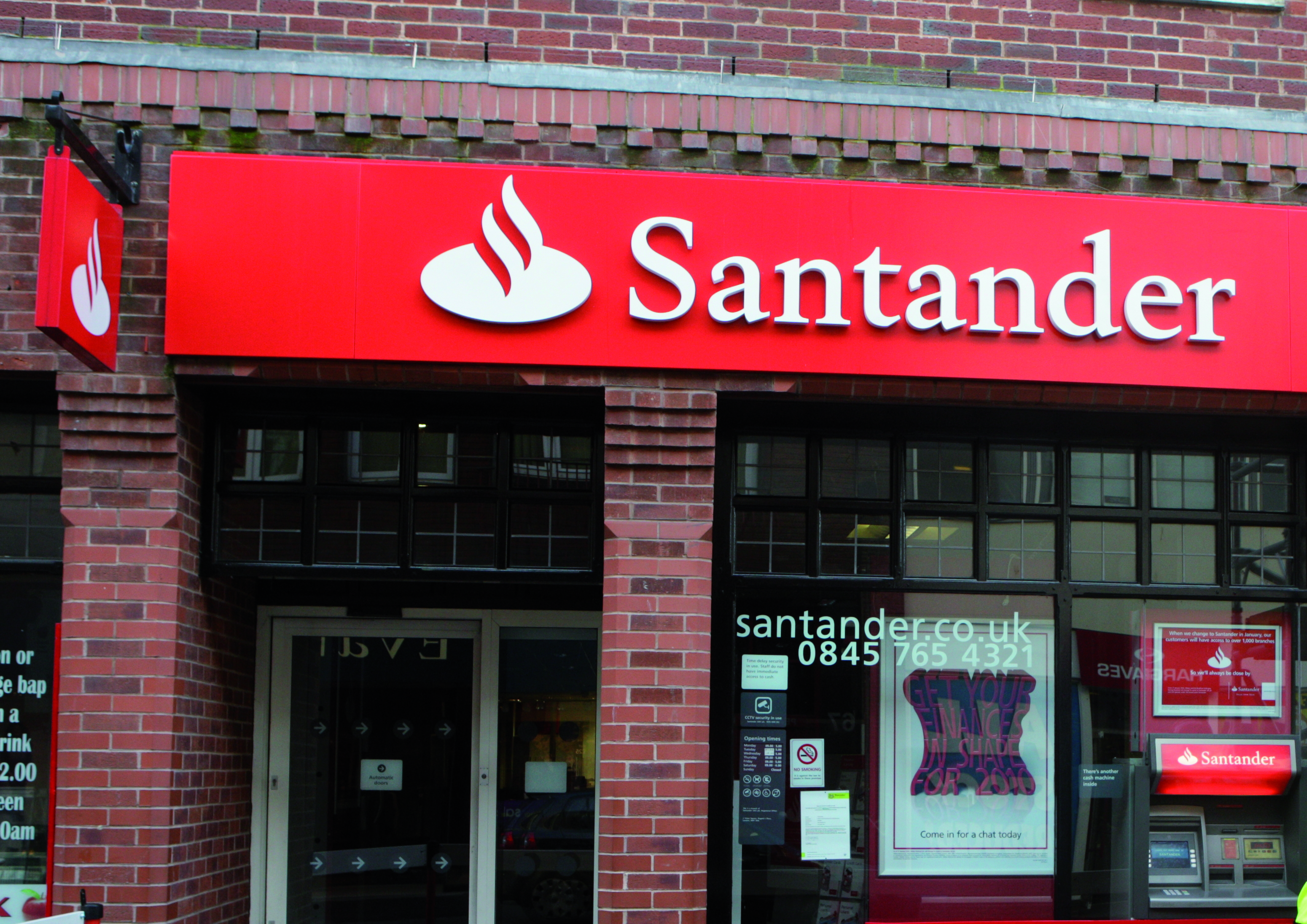(Left to Right) Sam Busfield, Loans Warehouse; Matt Tristram, Loans Warehouse; Paul Stringer, Norton Finance Group; Joanne Atkin, What Mortgage; John Webb, Paragon Bank; Buster Tolfree, United Trust Bank; Garry Monaghan, Clearly Loans What Mortgage held a round table discussion with some of the leading second charge mortgage lenders and brokers to discuss second mortgages, […]
(Left to Right) Sam Busfield, Loans Warehouse; Matt Tristram, Loans Warehouse; Paul Stringer, Norton Finance Group; Joanne Atkin, What Mortgage; John Webb, Paragon Bank; Buster Tolfree, United Trust Bank; Garry Monaghan, Clearly Loans
What Mortgage held a round table discussion with some of the leading second charge mortgage lenders and brokers to discuss second mortgages, why people take them out and how the market has changed
New rules regarding second charge mortgage lending came into play on 21 March 2016. The snappily entitled European Mortgage Credit Directive (MCD) means that all second charge lenders and brokers must be authorised and regulated by the Financial Conduct Authority – the UK’s financial regulator. Basically, what this means is that all second charge lenders now have to comply with the same rules as first charge lenders.
– What is the difference between a first charge mortgage and a second charge mortgage?
Second charge mortgages are also referred to as secured loans. This is because the loan is ‘secured’ on the property you are buying, which means that if you can’t repay the loan, for whatever reason, the lender has the right to take the property from you and sell it so they can get their money back.
First charge mortgages are also secured loans, for exactly the same reason – it’s just that they are traditionally referred to as a mortgage.
Our round table guests said they would prefer the term ‘second charge mortgage’ instead of secured loan as it differentiates from a first charge mortgage, although both terms are acceptable. In order to get a second charge mortgage you must have a first charge mortgage.
– Why take out a second mortgage?
Matt Tristram: It is often due to restrictions on the first mortgage. The customer might be tied into a fixed period with a good interest rate and applying for more money will change that rate.
John Webb: They might have an interest–only mortgage and find they can’t remortgage elsewhere. Their current lender says, in order to qualify for a further advance, they have to move to a capital and repayment loan meaning they lose the interest-only deal and the lower monthly repayments.
John Webb: We have seen an increasing number of people who want to protect their current first mortgage deal. The typical purpose for loans includes an element of debt consolidation, then capital raising to raise money for a major purchase.
Buster Tolfree: About 80% of second charge loans contain some element of debt consolidation but that does not mean that 80% of the lending we do is for consolidation. It might be to pay off a £1,000 credit card and £59,000 worth of home improvements. They might be paying 23% on a credit card and you can get a secured loan for as low as 4.5 or 5%. It’s a better rate but you might be taking the secured loan over a longer term.
John Webb: It boils down to affordability. If you’ve got high interest rates and short-term unsecured credit you have higher monthly payments. Spread that over a longer term, interest is repayable over a longer period but at a cheaper rate so, depending on the amount of the second mortgage, there can be a lower monthly repayment at the end of the day.
Paul Stringer: Flexibility over the term of the loan is one of the key reasons why customers take out a second charge mortgage. If the first mortgage has five or 10 years left to run, a second charge can run for 20 or 25 years – and vice versa. If the mortgage is for 25 years a secured loan can be for three or five years, so it gives that flexibility as to when the loan can be repaid. The term of the second charge doesn’t have to match the first mortgage.
Buster Tolfree: Often you will see the average term requested is about 15 years. The average first mortgage is around 25 years. People only tend to keep their second charge loan for about four years because at some point they may have come off their fixed rate and can remortgage the whole loan, or they sell their house or upsize or downsize.
Matt Tristram: People’s circumstances change. They may have taken a mortgage out three or four years ago and were employed at the time but are now self-employed, or changed jobs six months ago and some lenders’ criteria is that you must have a job for a minimum amount of time, such as a year. Mortgage options are therefore more limited. There will also be a lot of people who took out mortgages many years ago and kept them because of low rates but now they don’t qualify to borrow what they borrowed before.
John Webb: Another point is that if you do remortgage you could suffer hefty early repayment charges on the first mortgage so a customer might be better off taking a second charge mortgage and then wait until any early repayment charge period in respect of the first mortgage expires.
– What is the minimum term?
Matt Tristram: The minimum is 12 months but that is very rare. It’s typically three years minimum and the maximum is 30 years, which a couple of lenders do.
Garry Monaghan: The other thing to compare is why would you take a secured loan rather than taking a personal loan? The reason is typically because of a lower interest rate and you can borrow for a longer term. With a personal loan you can only usually borrow for up to five years.
Matt Tristram: You can’t always get £25,000 on a personal loan whereas the second charge goes all the way up to £500,000 plus, although those loans are usually to high net worth borrowers. Pre-credit crunch, secured loans were all about consolidating debt but it’s different now. There are more larger loans and the average is around £40,000, but a lot of loans are written at £100,000 plus.
Paul Stringer: The larger loans tend to be for things like home improvements or for business purposes, particularly for the self-employed.
– What are interest rates like in the second charge market?
Matt Tristram: Interest rates start at 4.5% – from Paragon – and the highest rate at the moment is 18%.
John Webb: The rates reflect the risk.
The risk is not based on affordability, it’s based on adverse credit risk to the lender. You are not charged more because you earn less; it’s done on credit scoring and loan-to-value of the property.
Buster Tolfree: The market has changed. Pre-credit crunch the average rate would have been around 9% to 10%.
Matt Tristram: Some were even up at 23% or 24% on high loan-to value loans (LTV) and 100% LTV loans.
Buster Tolfree: There would have been sub-prime activity going on with rates that high. Lenders now tend to offer much primer products with average rates in the fives and sixes.
It’s a different market today and a different type of customer. They are after further advance borrowing. If a borrower has a first mortgage of £175,000 at 2.5% and wants to borrow another £20,000, you don’t want to remortgage the whole lot onto 4.5%.
– What about mortgage brokers?
Matt Tristram: There are separate first charge brokers and second charge brokers and some do both. I think you’ll start to see more brokers doing both first and second charge lending. A lot of first charge brokers are partnered with second charge brokers and can refer cases if that is best for the customer.
Under the new MCD rules, if you are a first charge broker that doesn’t advise on seconds you must disclose that. If you are a second charge broker that does not advise on first mortgages, you must disclose it and if you do both you must consider both.
John Webb: The independent financial adviser who wants to stay independent will have to give advice across the whole of market.
Buster Tolfree: With the introduction of the Mortgage Credit Directive (MCD) brokers will have to consider what product is best for the customer, whether that is a further advance or a remortgage or a second charge loan. Alternatively the broker needs to advise the customer that other alternative finance options may be available such as a further advance (unless they know it is not available) or a second charge where they are considering a first or vice versa.
– Under the new rules, borrowers must be presented with an ESIS, what is that?
John Webb: The customer will receive with every recommendation a mortgage illustration (called an ESIS or European Standardised Information Sheet) that discloses every detail of the loan – the fees, the rate and how it can vary and any early repayment charges. The customer has to have that recommendation before he makes an application for a loan.
Buster Tolfree: The ESIS replaces the KFI (Key Facts Illustration) as the new mortgage illustration document. Some first charge lenders are going to use KFI Plus [a transitional document between a KFI and an ESIS – UK lenders must move to the ESIS by March 2019]. Second charge lenders are going straight to ESIS because they did not have to issue a KFI before.
– Another new feature is a seven-day reflection period?
Matt Tristram: From a broker’s point of view broker, we have to get the valuation and the mortgage references. The application then goes to the lender who will assess it and issue a binding offer. The customer then has a seven-day reflection period giving them the opportunity to change their mind.
John Webb: That reflection period is a minimum of seven days but the offer stands for longer. We give 30 days and borrowers know that the offer can’t be taken away from them in that time.
Matt Tristram: Most second charge lenders have a 30-day reflection period but a couple of lenders have 90 days.
John Webb: After 30 days we would re-underwrite the loan and send out a new offer. We would re-evaluate any change in circumstance. It’s all about responsible lending as no lenders want to overcommit borrowers.
– As second charge lenders now have to follow the same affordability rules as first charge lenders, will they be more strict in their lending criteria than before and reject more applications?
Garry Monaghan: When Clearly Loans first started (July 2013), income and expenditure forms were just becoming standard in the seconds market. Stress tests are even newer.
[Editor: Stress tests are to assess whether a borrower can afford monthly repayments if the interest rate goes up in the future. The lender will add on another 3% to the mortgage rate and calculate what the repayment would be to see if the customer can afford that.]
Matt Tristram: In terms of debt consolidation, with a further advance on a first mortgage the borrower is paid the money directly. With a second charge mortgage, secured loan lenders will now write the cheque for the creditor so the money can’t be misused by the borrower and is used for the purpose stated.
Buster Tolfree: United Trust Bank came into the second charge market in May last year and we made a decision that we would have an MCD compliant affordability model from day one [instead of having to be compliant when the Mortgage Credit Directive went live on 21 March 2016].
The affordability assessment is much more like a first charge and more lenders will adopt affordability models by looking at things like ONS (Office of National Statistics) data, taking a proportion of overtime or bonus rather than the full amount. There is an argument that says stress testing is one of the reasons why the average interest rate has come down.
John Webb: You have a range of lenders with different risk appetites but the new rules will force lenders to stress first and second charge mortgages with in line with future interest rates expectations. There will be a lot more evidence gathering of income and expenditure with substantial proof that it is regular and sustainable.
Paul Stringer: It is common sense, responsible lending. There is no additional risk to the lender if the borrower has a good profile. So if you have been in a job for five months instead of six, we can take that into account; by the time the application had gone through you will be through the six-month period.
With the ability to manually check cases we have the opportunity to get good quality business from customers who are credit worthy, who can pay their loans but for whatever reason may have fallen outside of the mainstream credit scores. We can help people who have had a past credit problem that is now rectified.

– How do people find a secured loan?
Matt Tristram: The market is now led by the aggregator sites [comparison websites]. Before the credit crunch a search for secured loans would have brought up the big master brokers such as loans.co.uk and Ocean Finance; now you see the likes of money.co.uk and Go Compare. The comparison sites list the products, the consumer choses and they go through to the master broker.
Buster Tolfree: Second charge lenders do not go direct to consumer. Our only distribution is through master brokers [brokers that specialise in second charge loans] and specialist distributors.
John Webb: We recognise that the specialist broker can better sift through the applications and place each customer with the right lender. So it’s a better customer journey.
Matt Tristram: There are 17 second charge lenders, four have automated systems, but the rest of the industry is heavily reliant on manual underwriting which is a huge bonus for the consumer. We can have a conversation with a lender to get a better rate than the standard published terms.
Sam Busfield: There is a greater level of flexibility. We are a smaller market than first charge but everyone communicates better than the first charge market. If a case doesn’t quite fit with one lender we can look at other options.
Paul Stringer: Brokers must be aware of secured loans compared with unsecured loans. The majority of customers who apply for an unsecured loan don’t get the rates that are showing on the price comparison websites. Often it’s a lot more expensive and a customer may not be aware that a secured loan could be cheaper than an unsecured loan.
Matt Tristram: The majority of applications start online now. The application comes online with the minimum of information then we speak to the customer and carry out a fact find.
Paul Stringer: At Norton, we give the customer the option of applying online with a mini application form or phoning us; 90% apply online, only 10% will phone us. Once we have the application we phone the customer to get the remaining details so we can source an accurate quote.
– When does the lender have dealings with the borrower?
Matt Tristram: Every lender will speak to the borrower prior to completion to confirm the information they have is correct, to confirm first payment dates, security checks, and so on.
Buster Tolfree: That is the only time we have direct contact with the customer. Identification is done in three ways: physical ID, such as a passport or driver’s license. Some cases will have electronic ID verification using third parties like the credit scoring agencies – Equifax, Experian and Callcredit. But every lender completes a third ID check which is the telephone security check, which comprises of “are you who you say you are?” with detailed questions.
The other part of the call will be to talk through other elements of the loan – the loan amount, interest rate, going through affordability checks, validating income expenditure and any questions a customer may have regarding the loan application itself. We will also confirm key elements such as the first due date, the home is at risk if they don’t repay, can they change their due date and those sorts of questions.
After the loan completes we would only tend to liaise with the customer in terms of any customer service issues or arrears or financial difficulty or if they wanted a further advance.
– Can a borrower apply for more money at a later date?
Buster Tolfree: For a further advance on your second charge loan you would typically talk to your lender, but some have different criteria, such as whether you have to be with the lender for six months or a year to be considered. Some lenders would take further advance applications themselves, others would point the customer back to the original secured loans broker.
– What sort of fees are we talking about for a secured loan?
Matt Tristram: Typically, a lender fee for a secured loan would be around £495 to £995.
Paul Stringer: Most lenders have a flat fee although some may charge 2% to 3.5% .
Matt Tristram: There will always be a broker fee of historically between 10% and 12.5% but that is coming down now to between 5% and 12.5%. From March borrowers will also have the option to pay that fee upfront. In the past the broker fee has always been added to the loan.
Buster Tolfree: The key thing about fees is that they have got to be transparent; they have got to be reasonable and representative of the work that is undertaken. Higher loan sizes tend to have a higher fee because there will be a full valuation, which costs more to undertake [than a desktop or drive-by valuation]. As we move further into the new regulatory environment, fee structures will likely change, there will be more flat fee structures.
John Webb: In the past, under the Consumer Credit Act, brokers could not charge a customer an arrangement fee if the loan did not complete. Brokers can now charge an arrangement or advice fee to all customers.
Matt Tristram: Also in the past, the broker paid the valuation fee up front and the customer only paid for it if the loan went through. Initially, under the new rules, Loans Warehouse will continue to pay for valuation fees [but that decision is up to each brokerage firm].
– Does the customer have to pay an advice fee?
Matt Tristram: Loans Warehouse does not plan to do that but the news rules would allow a broker to charge an advice fee if they wanted to. We do not charge a valuation fee or an advice fee. If the loan does not go ahead we will not ask the customer for that money back.
Paul Stringer: We also are not going to charge an upfront valuation fee or an advice fee.
Sam Busfield: The point is this is all very new to us, and we have only ever operated within the Consumer Credit Act. by including the fee in the total loan.
Buster Tolfree: The second charge market has operated under the Consumer Credit Act for the past 40 years so this is a brave new world. Going forward there are options for lenders. From day one, lenders and brokers want to keep changes as relatively small as we can. As we move forward there will be change, which might include fees, early repayment charges, free valuations, even cashbacks.
Matt Tristram: Look at how many different types of first mortgage there are.
Sam Busfield: The only way to compete at the moment is on rate and LTV so product development is likely.
John Webb: The winner out of all this will be the consumer because there will be more choice.















